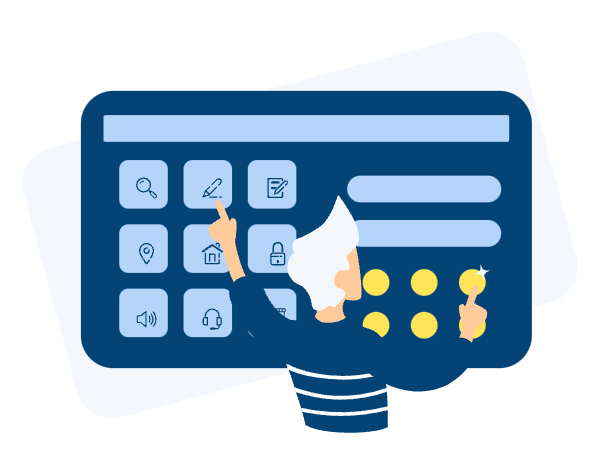Sometimes life throws a wrench in your plans, and you face unexpected expenses you weren’t ready for. Does this sound familiar? Maybe you went to head off to work, and your car wouldn’t start, or your company had to lay off employees due to an economic downturn.
Many incidents can cause a hit to your wallet when you aren’t ready for it. Not being prepared for these situations can be financially devastating and can be hard to recover from.
However, no matter what life throws your way, there are things you can do to soften the blow, so to speak, and not be financially thrown from it.
But what are some unexpected examples you may experience? This article will cover the most common types of unexpected expenses, the difference between unexpected expenses and annual expenses, and explain how to plan accordingly for any scenario that comes your way.
7 Common Unexpected Expenses Examples
Many different life situations can be pretty costly. Learning about the types of unexpected expenses you could face can help you plan ahead for them.
Here are seven unexpected expenses examples you should plan for:
1. Medical Expenses
What is one of the most expensive yet common unexpected expenses examples? Medical bills. As if being sick wasn’t stressful enough, you have to figure out how to pay for expensive healthcare.
The bad news is that the cost of healthcare is increasing. In fact, healthcare costs increased by 9.7% in 2020 and reached a whopping 4.1 trillion in the United States alone. It averaged out to around $12,530 per person, according to CMS.Gov.
Another massive expense is if you have a surprise visit to the emergency room or an extended hospital stay. The average cost of a night in the hospital is $11,700. That adds up to over $80.000 in just a week!
An unexpected emergency hospital stay can be financially detrimental.
2. Vehicle Repairs
Americans spent an average of $1,986 in 2019 on their vehicles. This isn’t as bad as a medical expense, but since 49% of Americans don’t have enough to cover a $400 emergency, it can still cause a hiccup in your finances.
However, other repairs can run much more than this. For instance, if you would need to replace your transmission or engine, this can rack up thousands of dollars in repair costs.
Not to mention the cost of a rental car if your insurance plan doesn’t cover that while your vehicle is being repaired. Plus, many people need a reliable car for commuting to work, running errands, and getting their children to school.
3. Home Expenses
There’s no place like home until something goes wrong. As wonderful as it is to be a homeowner, it comes with heavy financial responsibility. When you rent, you simply call your landlord, and they have to cover the cost of repairs when something breaks.
But owning your own home means you get to front the bill for anything and everything that goes wrong. Home insurance covers things like fires, storm damage, etc. but not problems you may face with plumbing, electrical issues, or if your appliances decide to quit working.
Costs for these repairs vary quite a bit depending on the project. For instance, the average cost of a plumber is $45-$200 an hour. So a clogged sink won’t cost as much as a busted pipe but can still be a bit pricey.
Another typical expense for homeowners is replacing major appliances when they break.
While many appliances can last many years, you will more than likely have one or two die on your watch unexpectedly. Here are a few major appliances you may end up replacing and what the average cost is:
- Water Heater $800-$1660
- Refrigerator $800-$12,000
- Washing Machine $450-$3,000
- Dryer $390-$3,000
- Stove/Oven $450-$2,800
You can save quite a bit on appliances if you buy them preowned, but it still can get costly depending on which appliance you need to replace.
4. Pet Emergencies
I can’t stress enough about having an emergency fund for your beloved pet. The last thing you want to do is make a decision based on your financial situation. Also, you can go into deep debt very quickly if your pet has a health emergency. I experienced this firsthand and have spent over $11,000 in vet bills over the last four years.
Unexpected expenses will happen when you are a pet owner. The average emergency vet visit ranges from $800 to $1,500, depending on your pet’s needs. However, if it’s something complex, it can shoot up thousands of dollars very quickly.
That’s why setting aside something is essential for your furbaby’s safety and can save you money on expensive high-interest credit cards.
5. Job Loss
This is one of the worst examples of unexpected expenses. Many of us felt we would never experience a layoff until the pandemic showed us how quickly things could change. Millions of people were laid off in 2020 and had to take employment with different companies, and some had to take on different types of jobs.
Over half of Americans live paycheck to paycheck, meaning a job loss can leave you in financial turmoil. Not only does it impact your finances, but it also takes a toll on your mental health as well. The American Psychological Association states that research shows that those coping with unemployment battle anxiety and depression.
Even if you are approved to receive unemployment, it can take several weeks to get your first payment. Another reason to have a rainy day fund stashed away.
6. Natural Disasters
You can’t turn on the news these days without seeing natural disasters striking all over the world. Earthquakes, hurricanes, volcanic eruptions, and many other tragic events leave a path of destruction and expensive repairs behind.
Since 1980 the United States has sustained over $2.275 trillion in weather and climate damages!
Natural disasters are one of the most traumatizing and costly unexpected expenses you may face. Damages to your home, vehicle, or even yourself can cause financial ruin if unprepared.
7. Cost of Living Increase
Everyone is suffering right now from the largest inflation increase in over 40 years. The cost of food is up 10.4%, and energy prices have increased by an astronomical 41.6% in the past year! This has a serious impact on the cost of everyday living.
For example, let’s say your electric bill averaged about $150 per month. The 41.6% increase in cost would bump your bill to $212.40 per month! That’s over $700 a year of an unplanned expense, and that’s in just one category of your basic living expenses.
Millions of Americans are facing financial hardship due to this unforeseen high cost of living. However, even though this may be a rare increase, you will still experience a rise in costs of consumer goods. The Federal Reserve views an annual 2% inflation rate as acceptable.
So, it’s essential that you plan for a rise in your basic expenses every year.
Unexpected Expenses vs. Annual Expenses
So what’s the difference between unexpected expenses and annual expenses? Well, although you may forget your annual expenses, they aren’t technically “unexpected.” You know how much these expenses are going to cost, and you can work them into your budget.
Some common annual expenses are real estate taxes, personal property taxes, and various insurance premiums. You could include these items in your budget and save for them accordingly.
For example, if your real estate taxes were $500 a year, you could save roughly $41.67 a month, so you aren’t caught off guard when they come due.
You can apply this method to all of your annual expenses, unlike unexpected expenses where you don’t know the exact amount of what they may cost.
What is not true about unexpected expenses?
Sure unexpected expenses can be challenging when they arise. However, that doesn’t mean you can’t prepare for a rainy day ahead of time!
No one wants to think in a worst-case scenario mindset, but being realistic about things that could affect you financially is essential to your livelihood.
You can prepare for these situations with planning and forethought. Let’s jump into how you can prepare for an unexpected emergency!
How to Plan for Unexpected Expenses
Now that you know the most common types of unexpected expenses, let’s discuss how you can properly plan for them to ensure your financial stability!
1. Use resources to plan for unexpected expenses
One of the best ways to prepare for an unexpected emergency is to utilize resources to assist in paying for them. For example, investing in various insurance plans for your health, home, cars, and pets can save you a bundle in out-of-pocket costs.
For instance, let’s say you’re in an auto accident, and the cost to repair your car is $2,000. If you have a full coverage policy and a deductible of $500, then you would save $1,500 on the unexpected expense!
Also, getting regular maintenance done on your home and vehicle can help reduce the chances of major repairs because it can help prolong the life of your vehicles and home.
So, get your car tuned up every year, and do things around the house, such as getting large trees trimmed to prevent them from damaging your property.
You know the saying, “an ounce of prevention is worth a pound of cure!”
2. Build up an Emergency Fund
Nothing is more important than having a healthy emergency fund in place for all these unexpected expenses that can pop up at the most inconvenient times. Everyone’s cost of living can vary, but your goal should be to have at least 3-6 months’ worth of basic living expenses saved.
This includes the cost of housing, such as mortgage payment or rent, food, utilities, and all your necessities to live. For example, if your total living expenses are $2,500 a month, you should save between $7,500-$15,000.
Don’t get discouraged by the amount. Try a smaller goal of something like $1,000 and work your way up from there! Having a solid emergency fund can keep you from charging up high-interest credit cards when you are hit with an unexpected emergency.
3. Get an affordable Salary Advance or Personal Loan
Sometimes despite your best effort, you just aren’t quite as prepared as you wanted to be and need cash fast. Don’t fret! You can get an affordable salary advance or personal loan right here with Stately Credit.
Here are the details of each one so you can decide which is best for your situation:
Salary Advance Loan
Getting a salary advance loan is an excellent low-cost option if you need money fast. You can borrow up to 50% of your monthly salary— up to $2,500 and pay $0 in fees. Plus, no credit check is required. Click here to learn more and apply for a salary advance loan!
Personal Loan
If you need a bit more than a salary advance, then you should apply for one of our affordable personal loans to help. You can borrow up to $25,000, with an APR as low as 5.9%, depending on your credit score. Loan terms are between 6-36 months.
Another awesome thing about our personal loans is there are never any fees. Click here to learn more and apply for a personal loan!
Stay on track with your finances by planning for unexpected expenses!
Although unexpected expenses can be costly at times, it doesn’t mean you can’t plan ahead for them. You can prepare by investing in various insurance policies to reduce out-of-pocket costs and bulking up your emergency fund, so you have cash when you need it.
If you are facing an unexpected emergency now and need cash in a hurry, then be sure to reach out and apply for one of our low-cost salary advances or personal loans today!



